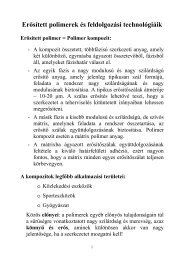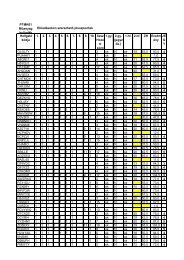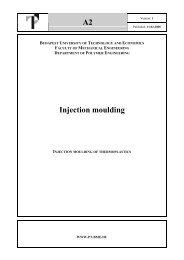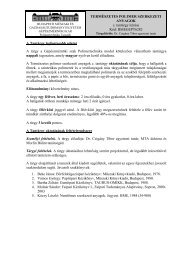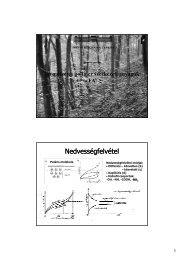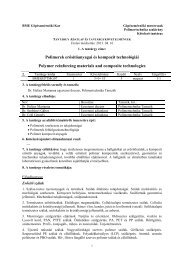Swelling, compression and tribological behaviors of ...
Swelling, compression and tribological behaviors of ...
Swelling, compression and tribological behaviors of ...
Create successful ePaper yourself
Turn your PDF publications into a flip-book with our unique Google optimized e-Paper software.
1132 KORRES ET AL.Figure 9 SEM images <strong>of</strong> the dried surfaces <strong>of</strong> H-reference (top) <strong>and</strong> H-NB (bottom) hydrogels at differentmagnifications.NB. Note that the formation <strong>of</strong> agglomerates mayalso be triggered during the drying <strong>of</strong> the hydrogel.Figure 10(a) demonstrates that the reference H-gelis transparent in equilibrium swollen state. However,the NB modification makes the hydrogelslightly hazy [Fig. 10(b)] compared to the reference.This suggests the presence <strong>of</strong> microscaled agglomeratesin the H-NB system. On the other h<strong>and</strong>, SEMpictures demonstrate the good bonding between thefiller <strong>and</strong> polymer matrix (cf. Fig. 9). The latter isdue to the strong interaction <strong>of</strong> the polymer functionalgroups with the absorption centers (OHgroups)<strong>of</strong> the clay platelets via H-bonding. Chemicalreactions between the ASO 3 H group <strong>of</strong> AMPSA<strong>and</strong> the metallic structural components <strong>of</strong> the claycannot be excluded, either. Moreover, ionic interactionsbetween the SO – 3 anions <strong>of</strong> AMPSA <strong>and</strong> claycations (i.e., Na þ ) may also be present. These interactionscause the reorganization <strong>of</strong> polymer chainsnear the filler particles <strong>and</strong> change the surface morphology<strong>of</strong> the clay-reinforced hydrogel. This factmay be a reason for the significant improvement <strong>of</strong>the mechanical properties <strong>and</strong> resistance to slidingwear compared to that <strong>of</strong> the pristine gel.To investigate the structural changes <strong>of</strong> the hydrogels’surface due to the filler in more detail, theFigure 10Photos <strong>of</strong> the swollen H (a) <strong>and</strong> H-NB (b) hydrogels.Journal <strong>of</strong> Applied Polymer Science DOI 10.1002/app





